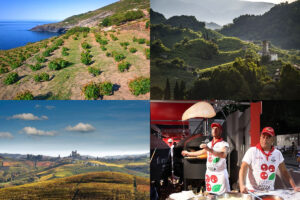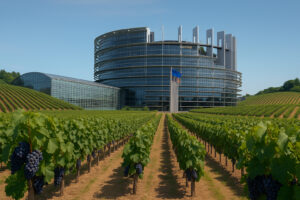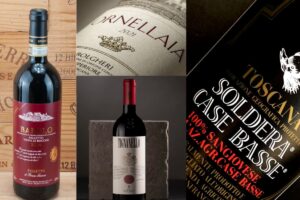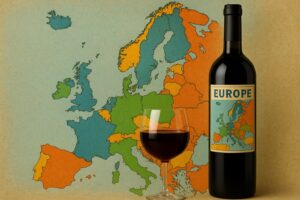The global market of imitation Italian food products is worth 50 billion euros, just about half of earnings for the entire sector. This is the data that emerged from a study that was recently presented by Coldiretti in Naples where, for the first time, a dinner table was set with all of the false Italian goods that are produced around the world, from Europe to Asia, to the Americas. In the city considered the capital of Mediterranean cooking, the first exposition of international imitation Italian products brought to light the existence of widespread piracy in the food and agriculture sector, that is fooling consumers all over the globe and damaging original producers in Italy.
In the U.S. there are Roman “Contadina” style tomato preserves and sauces that were actually made in California, provolone from Wisconsin, mozzarella from Minnesota, and in Australia one can find Bolognese sauces and mozzarella, ricotta, and Parmesan cheeses with the Italian seal. While in China, national industry offers tomatoes, Parmesan, Caciotta (cheese), and even pecorino sheep’s cheese, complete with a picture of a cow on the package. And the examples of false goods from the Old Country are not lacking either. Coldiretti discovered German production of balsamic vinegar from Modena and Amaretto from Venice with a bottle whose shape scandalously imitates Amaretto di Saronno. While in Spain, there is ‘Romulo’ olive oil, evoking Roman legend on its label. And even in the countries that have newly entered the EU, like Estonia, basil sauces from Bologna can be found. But the countries with the largest production of false goods remain America and Australia.
In the United States – denounced Coldiretti - only 2% of total U.S. consumption of Italian cheese is satisfied by authentic imported cheeses, while the rest is covered by imitation and false goods produced with milk originating in Wisconsin, New York, and California. In particular, Parmigiano Reggiano is a fake nine out of ten times it is acquired. But there are even imitations like the “Cambozola”, very close to the traditional gorgonzola cheese. These products are even exported, and risk implanting themselves in new populations even though they have nothing to do with the original Italian product. Parmigiano Reggiano and Grana Padano are the two most imitated products in the world, with variations like Parmesao in Brazil, Regianito in Argentina, Reggiano and Parmesano throughout South America, Parmeson in China and Parmesan in the U.S. and Canada, Australia and Japan. And there are even variations like "Grana Pardano", "Grana Padana" and "Grana Padona".
“We are confronted with a global deception for consumers that causes economic and image damage to Italian production, and which must be combated on an international level with international agreements on commerce within the WTO, where it is necessary to intensify the battle against the piratry of food products that falsify the territorial identity of these goods and impedes transparency in exchanges.” This was the confirmation made by Coldiretti President, Paolo Bedoni who also emphasized that, “it is necessary to create an alliance with developing countries where there can emerge an increased awareness of the safeguarding of intellectual property for food products, and in the fight against local counterfeiting”.
And it is now important to move ahead quickly in order to recuperate the delays accumulated on markets in regards to developing commercial relations that would create original Italian product awareness. And, above all, it is necessary to work on giving more value to territorial identity with information and the obligation of indicating the origin of all goods on labels, because in a few years – according to Bedoni - the most sold products will be those that the French call “terroir”, connected to their territory of origin.
Coldiretti – The “fake” menu, from appetizers to bitters:
Shopping on the global market these days means setting one’s table with what are apparently “Made in Italy” products, but which many times have nothing to do with Italy, except for the image, a similar name, or the Italian flag on the packaging. The hypothetical dinner prepared with these fakes could start with mozzarella made with milk from Minnesota or Australia, or with Parmesan (also Parmeson) from almost anywhere in the world, but which certainly have almost nothing to do with the original from Padania.
The first course offers a portion of spaghetti with Bolognese sauce, but the pasta is actually made in Germany and the sauce, that has no meat in it but just basil, comes from Estonia. And for those who are vegetarian, there is the alternative tomato sauce “Contadina-Roma style tomatoes”, from the best supermarkets in California, or the “Pomodorini di collina” from China. At this point, no one would be scandalized if a bit of Pecorino was added, from Shanghai.
For the second course, there are various choices: “perfect Italian” ricotta from Australia, provolone from Wisconsin, and Chinese Caciotta. With the side salad, one can use a few drops of balsamic vinegar from Modena but of completely Teutonic origin, as well as some “Romulo” extra virgin olive oil from Spain, complete with the figures of Remus and Romulus on the label.
If still thirsty after an abundant glass of Classico Caberlot from Romania, one can continue with an Amaretto Venezia, but from Germany, and complete with a bottle that is shamelessly similar to the most unique form of that of Amaretto di Saronno.
The “Made in Italy” fakes found around the world:
Roma style tomatoes, sauces and preserves produced in California, provolone produced in Wisconsin, mozzarella produced in Minnesota; Bolognese sauce, mozzarella, ricotta, Parmesan (“Perfect Italian”), produced in Australia; Parmesan (Fresh grana cheese), tomatoes, Pecorino (with a picture of a cow on the label), and Caciotta, all from China; balsamic vinegar from Modena, Amaretto, and spaghetti from Germany; ‘Romulo’ extra virgin olive oil produced in Spain; Classico Caberlot made in Romania; Bolognese sauce (made with basil and no meat as in the traditional recipe) from Estonia.
Source: Coldiretti
Italian gastronomic patrimony should be protected against piratry:
-4,255 traditional products registered by Italian regions (1,252 fresh pastas, breads, and sweets products, 1,193 vegetable based products, 716 meats, 456 cheeses, 146 drinks and liquors, 151 products of animal origin like honey, 136 types of fish preparations, 126 dishes or gastronomic products, 46 fats like butter, oil, and margarine, and 33 condiments).
-155 products of denomination or indication of protected origins (DOP/IGP), recognized by the EU (47 fruit and vegetable products, 37 extra virgin olive oils, 32 cheeses, 28 meat based products, 3 bread products, 3 spices, 2 vinegars, 2 fresh meat products, and 1 honey).
-481 wines with the denomination of controlled origin (DOC), controlled and guaranteed (DOCG), and (IGP) typical geographic indication (327 DOC wines, 34 DOCG, and 120 IGT equal to 60% of total national wine production).
Source: Coldiretti elaboration of data from the Ministry or Agriculture
‘Made in Italy’ food products in numbers:
Earnings: Italian food products are worth a total value of over 180 billion euros (108 from the food industry) and represent 15% of internal production (PIL), second only to the manufacturing sector.
Commerce Abroad: in the first six months of 2006, the export of Italian food products increased by 10% while imports increased by 9%. A boom for Italian cheeses in the U.S., with Parmigiano and Grana Padano (+18%) affirming themselves as the most consumed Italian milk derived product. There has also been a record increase (+11%) of wine imported from the United States. An increase of +7% for pasta exports to Europe and the rest of the world. And further export growth is expected due to the World Cup victory, which should show results in the second half of the year. There are also interesting emerging markets like China, though it is the imports to Italy that have more than doubled (115%). In 2005 the total value of imports surpassed that of exports by about 4.5 billion euros.
Enograstronomic tourism: a sector that is in continuous growth, earnings are estimated at 5 billion euros, thanks to 15,000 from agritourism, as well as “wine cities” (546 municipalities are included among these), oil (284), organic products (60), and bread (42), as well as the “wine routes” that pass through the entire country. A study by the Istituto Piepoli-Leonardo-Ice shows that for almost one out of two foreigners, the main thing that comes to mind when thinking of Italy is food and wine (45%), even higher among Swedes (70%) and Americans (58%). The thought of Italian food products is less common, however, among Chinese (31%) and Russians (28%).
Source: Coldiretti
Copyright © 2000/2025
Contatti: info@winenews.it
Seguici anche su Twitter: @WineNewsIt
Seguici anche su Facebook: @winenewsit
Questo articolo è tratto dall'archivio di WineNews - Tutti i diritti riservati - Copyright © 2000/2025








































































































































































































